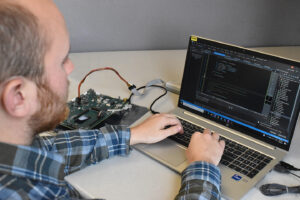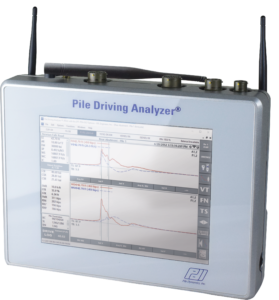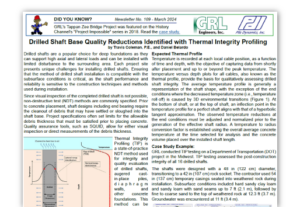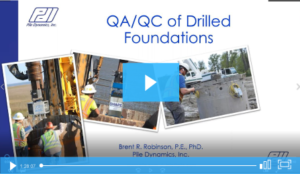Why does the “DFN” value sometimes not match the actual set measured on site?
DFN is the final displacement, obtained by double integration of acceleration, with only one integration constant defined (velocity zero at end of record). Sometimes the “DFN” value does not match the actual measured set on site because of a “bounce impact” late after the first impact. In this case, the end time of integration can be adjusted by using the CW function of the PDA-W program, or CAPWAP Adjust function in PDA-S. If the “drive log” is entered, the PDA-W program can adjust the data to the average observed final set per blow (generally only small acceleration shifts are needed). It should also be understood that the set of any individual blow (at least for a driven pile) is difficult to assess, and is often different than the average set determined by dividing the total net displacement for a series of blows by the number of blows in that series, particularly when the hammer performance or soil resistance is changing. Another potential cause is insufficient pretrigger length when using diesel hammers; try adjusting the pretrigger buffer in PAX or PDA-S during data acquisition to at least 35 msec for diesel hammers.
Return to FAQs



